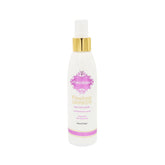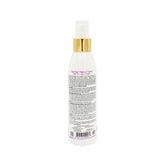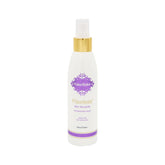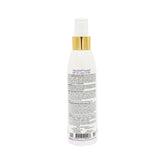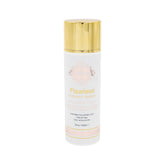Learn About Getting your Glow On with Spray Tanning
If you've never gotten a spray tan, you might have a picture in your head of an aim-and-shoot session with someone holding a can of hardware-store spray paint. Not quite. The process of spray tanning does involve distributing a mist onto your skin. But it is actually a fast, easy way to get an all-over bronze glow without the dangers of ultraviolet radiation from the sun or a tanning booth. Many celebrities prefer spray tanning over any other type of tanning because of their customizable, high-quality end results.

How Is It Done?
Spray tanning relies on the same chemicals as self-tanning lotions, gels, mousses and liquids that you apply at home. A tanning formulation containing dihydroxyacetone (DHA) - and sometimes erythrulose, another tanning agent - are sprayed onto your skin in a fine mist. DHA and erythrulose react with surface skin cells to temporarily darken pigments. The effect lasts for approximately a week, until the pigmented surface skin cells are naturally sloughed off to be replaced by new skin cells.
Spray tans are administered in a few different ways. You can go to a salon, where a tanning artist will use an airbrush gun or spray tan gun. Or, you can have the artist come to your home with a portable spray gun. Last but not least, salons have spray tan booths containing several spray nozzles that distribute tanning solution automatically over your entire body.

Pros and Cons of Spray Tanning
First and foremost, people are generally very happy with the results they get from spray tanning. Although all formulations contain DHA, there are definite differences in how they develop. Tanning artists are helpful in working with you to find the right formula for your desired tone. It's reassuring to have an experienced individual to confer with and who will make recommendations.
Many people like tanning booths or spray tan sessions because the process is faster and easier than application of at-home products. Booth sessions take only about 30 minutes. Also, the spray solution tends to dry faster than the home self-tan products, which minimizes staining of clothes and linens.
One downside of spray tanning compared to self-tanning at home with lotions, gels, mousses etc. is the price. Most spray tan sessions cost $25 to $50 or more in some locations. Since the color only lasts about a week, this gets quite expensive to maintain. Also, making appointments at the salon or for a home visit can be inconvenient for many, especially on an ongoing basis.
Finally, one should consider that after their salon booth or tanning artist session, they have to get dressed and travel home, which is a staining risk for clothes and car seats. It's best to wear loose, dark-colored clothing to a spray tan appointment, but there is still that risk of staining the car upholstery.
Spray Tan Preparation
Just as when you apply self-tanning formulations at home, you need to prepare your skin for spray tanning before you show up at the salon:
- If you wax, wait at least 24 hours before getting a spray tan.
- Shave and exfoliate your skin with a scrub or exfoliating cleanser.
- Make sure your face and body are free of makeup, deodorant, perfumes and moisturizers, because these can interfere with proper development of your spray tan.

- Right before your spray tanning session, use a light moisturizer on your elbows, knees and ankles. These areas tend to have thicker layers of skin and absorb too much of the tanning formula unless coated with some moisturizer. Another technique is to wipe these areas lightly right after your spray tan application. Also, coat your lips with a protective balm so that you don't get any of the spray tan mist in your mouth.
- Smooth some petroleum jelly or other type of balm on your palms and the inside of your fingers, to prevent staining from the spray mist. Wear a shower cap to shield your hair too.
After your spray tan, you should wait eight hours before taking a shower and some experts advise even longer. During this time, be careful to avoid getting wet or sweaty, since moisture hinders proper tan development.
Is It Safe?
DHA has been approved by the U.S. Food and Drug Administration (FDA) for cosmetic use (i.e. external application). However, this excludes DHA that comes in contact with the body's mucous membranes, including inside the mouth, eyes, ears and nose. There have been medical studies done that warn of possible bodily harm if DHA from tanning spray enters the body through these areas, particularly if it reaches the lungs.

For this reason, precautions should be taken, including salon eye covers and nasal filters to minimize spray mist inhalation. If you are really concerned, you might consider covering your face altogether or using great-quality at-home self-tanning products.

